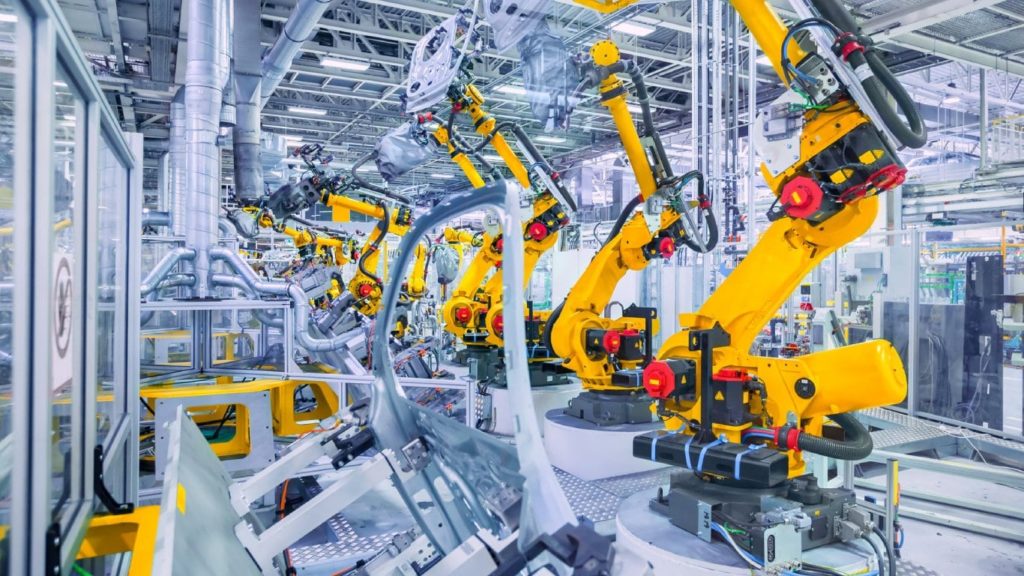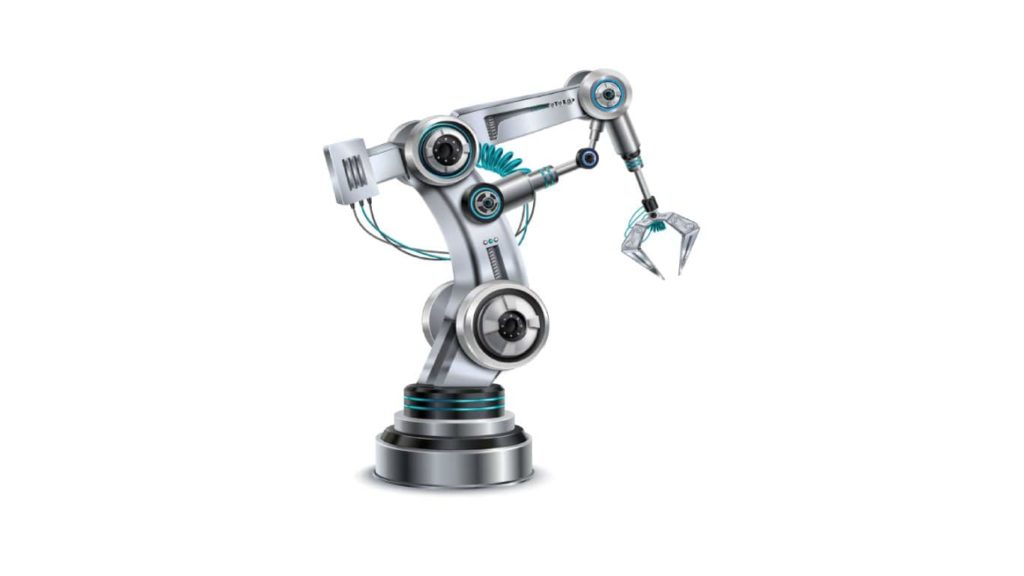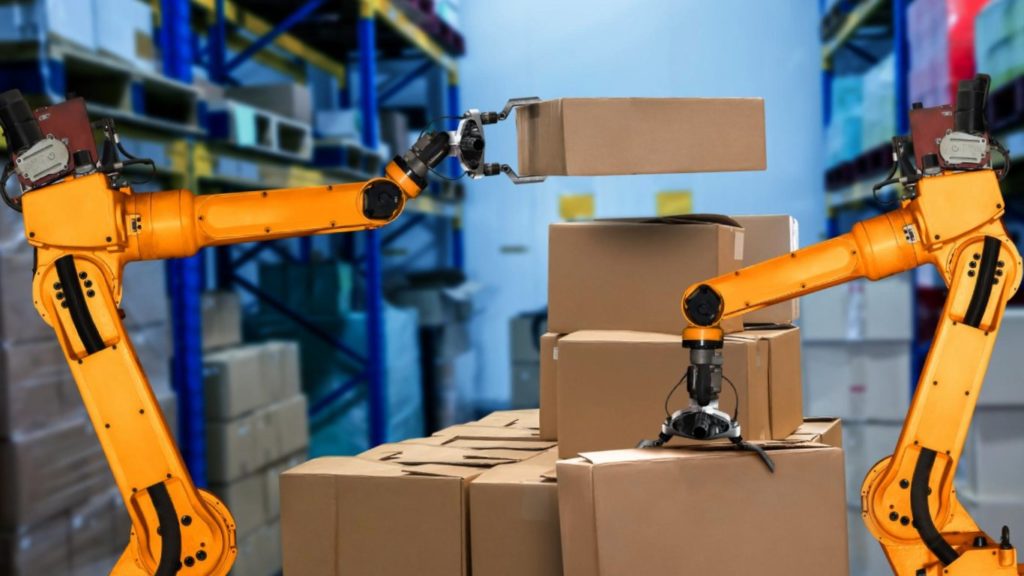
Manufacturing is an extensive industry that has seen the use of robotics for the better part of the last two decades. However, there is still huge potential for robotics in manufacturing. With the advancement of robotic technology, AI and robotics have become much more critical. As more and more of the world goes digital, manufacturing, too, has to evolve. Viewing past trends and current applications, it has been doing a wonderful job of integrating robotics. The following article highlights the applications, as well as, the implications of robotics in manufacturing.
What are Industrial Robots
Industrial robots are robots used in the manufacturing and industrial sectors. These robots help boost productivity, making sure that the tasks are performed with the maximum efficiency. As modern technology evolves, the robots are also evolving.
Industrial robots are like the superheroes of manufacturing and industry. Their mission? To take productivity to the next level, ensuring every task is done super efficiently. And just like our favorite comic book characters, these robots are always leveling up.
As new technology comes into play, they’re becoming smarter and more sophisticated, capable of doing some seriously complex stuff with pinpoint accuracy. Not just that, with artificial intelligence and machine learning in their toolkit, they’re evolving from simple automated machines into intelligent teammates that can adapt on-the-fly, learn from experiences, and make decisions in real-time.
As we look to the future, it’s clear these robotic whizz kids will continue pushing the limits of what’s achievable in industrial automation, paving the way for a new era of sky-high productivity and groundbreaking innovation.
Types of Robots in Manufacturing
First, we will explore the various types of robots used in manufacturing. It is a very versatile field. Hence, the robots used come in different configurations, shapes, and sizes, each adhering to a specific manufacturing task.
| Type of Industrial Robot | Common Applications in Manufacturing | Implications for the Sector |
|---|---|---|
| Articulated Robots | Assembling, painting, cutting, welding | More precision and efficiency, reduction in human error |
| Cartesian Robots | Pick & place tasks, assembly operations, handling machine tools | Greater speed and accuracy, increased safety in repetitive tasks |
| SCARA Robots | High-speed assembly, pick & place | Improved productivity in assembly line tasks |
| Delta Robots | Fast pick & place tasks, packaging | Increased performance in high-speed production lines |
| Collaborative Robots (Cobots) | Machine tending, quality inspection, packaging | Enhanced collaboration with human workers, increased flexibility |
Given below are the explanations for the few types of robots most commonly used in manufacturing.
1. Articulated Robots
These are some of the most versatile and widely used robots in manufacturing. As they have multiple joints oaxestational axis, they can be highly flexible. The common 6-axis robot offers six degrees of freedom that allow it to move multidirectional.
2. Delta Robots
Delta robots are parallel robots known for speed, precision, and lightweight design. Suited for high-speed pick and place tasks, rapid movements, and accurate positioning, they undertake critical jobs in manufacturing. These are commonly found in the food and beverage, pharmaceutical, and electronics industries.
3. SCARA Robots
Selective Compliance Assembly Robot (SCARA robots), is a specifically designed robot for high-speed assembly and material handling. They can perform in a limited workspace and make an excellent choice for electronics, automotive, and consumer goods manufacturing due to their speed, precision, and compact form factor.
4. Cartesian Robots
Cartesian robots are also known as gantry robots. These robots operate within a three-dimensional coordinate system and are useful for assembly, material handling, and machining. These linear robots are based on a straightforward and easily understood framework that supports robot movement.
5. Polar Robots
These robots are known as spherical or radial robots and operate within a spherical coordinate system. The design consists of a rotating base and extendable arms. As such, polar robots are used in sectors that demand a wide range of motion and versatility, like welding, painting, and material handling.
Application of Robotics in Manufacturing
Now, let us explore the various applications of robotics in manufacturing.
Assembly and Dispensing
First off, we have assembly and dispensing, which is one of the major components of manufacturing. Robotics is used to assemble smaller components into larger units. For this, dexterous and flexible robots are needed. These robots are fastened to the floor and can’t change their position. Mostly cartesian robots are used for these tasks. However, advanced machining requires 6-axis articulated robots.
Handling and Picking
Next up is handling and picking, which favors transporting goods to and fro a conveyor belt. Robots are also used to place items onto a packaging platform. With the rise of e-commerce, the demand for such high-mobility robots has also increased substantially.

Machining and Cutting
Machining and cutting is a repetitive component of manufacturing that involves automated robots that excel at repeating a task. These robots include jobs like machine tending, loading, milling, drilling, laser cutting, plasma cutting, and water jet cutting.
Welding and Soldering
Nowadays, welding and soldering can be automated. Hence, manufacturing sectors utilize automated robots for arc welding. These robots are fastened onto a workstation ranging from smaller bench tops that handle lower production volume to large systems.
Casting and Molding
Casting or molding undertakes to form metallic objects by injecting liquid metal into a die or cavity. Today, casting has been automated, because it is a repetitive task that a robot can handle with high precision.
Finishing and Sanding
Manufacturing also involves finishing, polishing, and sanding. Initially, it was performed by humans, but today, automated robots can handle these tasks. However, it is still not as widespread as other applications.
Painting and Coating
Painting and coating are also a part of manufacturing that can be done with the help of robots. Such painting is well-defined and repetitive, and articulated robots can handle such a process easily. They can perform consistently while maintaining high quality and safety.
Packing and Palletizing
Packaging is one of the most common areas of manufacturing. Applying robots to the packaging sector positively impacts safety and efficiency. Automating packaging also helps with overall production.

Inspection and Quality Control
And finally, we have inspection and quality control that was initially helmed by humans. But with the advancement of AI and robotics integration, robots can be seen undertaking this task with 200% accuracy.
Pros and Cons of Robotics in Manufacturing
Although robotics has become a core component of manufacturing, it has certain advantages and disadvantages, which we have explained below:
Pros
- Increases production
- Higher ROI (Return On Investment)
- Improves Workplace environment
- Reliable
- Decrease in operating and energy costs
Cons
- Costly initial investment
- Job loss
- Limited in human-like tasks
For a better list, have a look at our article on the advantages and disadvantages of robots.
Future Implications of Robotics
The last few decades have seen an increased application of robotics in manufacturing. It has set a trend for the present and future use of robotics. Certainly, the use of robotics also has future implications that can shape the industry for ages to come. We have already seen the rise of AI, and by integrating AI with robotics, we can look forward to the changes that are yet to come.
Lights-Out Manufacturing
Lights-out manufacturing is nothing but robotics automation without human interference. In this type of manufacturing, robots handle everything from the beginning to the end. It helps with labor costs and improves production. By integrating AI, lights-out manufacturing can become self-sufficient and reliant.
IoT Capable
IoT devices are an amalgamation of physical devices and internet connectivity. Such devices are far smarter and capable of prosecuting a task. Robotics have also embraced IoT technology by adding sensors capable of reading the environment. These robots are capable of making informed decisions and acting accordingly.
Cybersecurity
Although AI and IoT technology has positive implications, it also opens doors to online threats. Thus, the more manufacturers use IoT-capable robots, the higher the chance of cyberattacks. Due to this, the manufacturer also has to invest extensively in cybersecurity. That is why cybersecurity has become a major trend in robotics.
Did you know that there is an International Federation of Robotics?